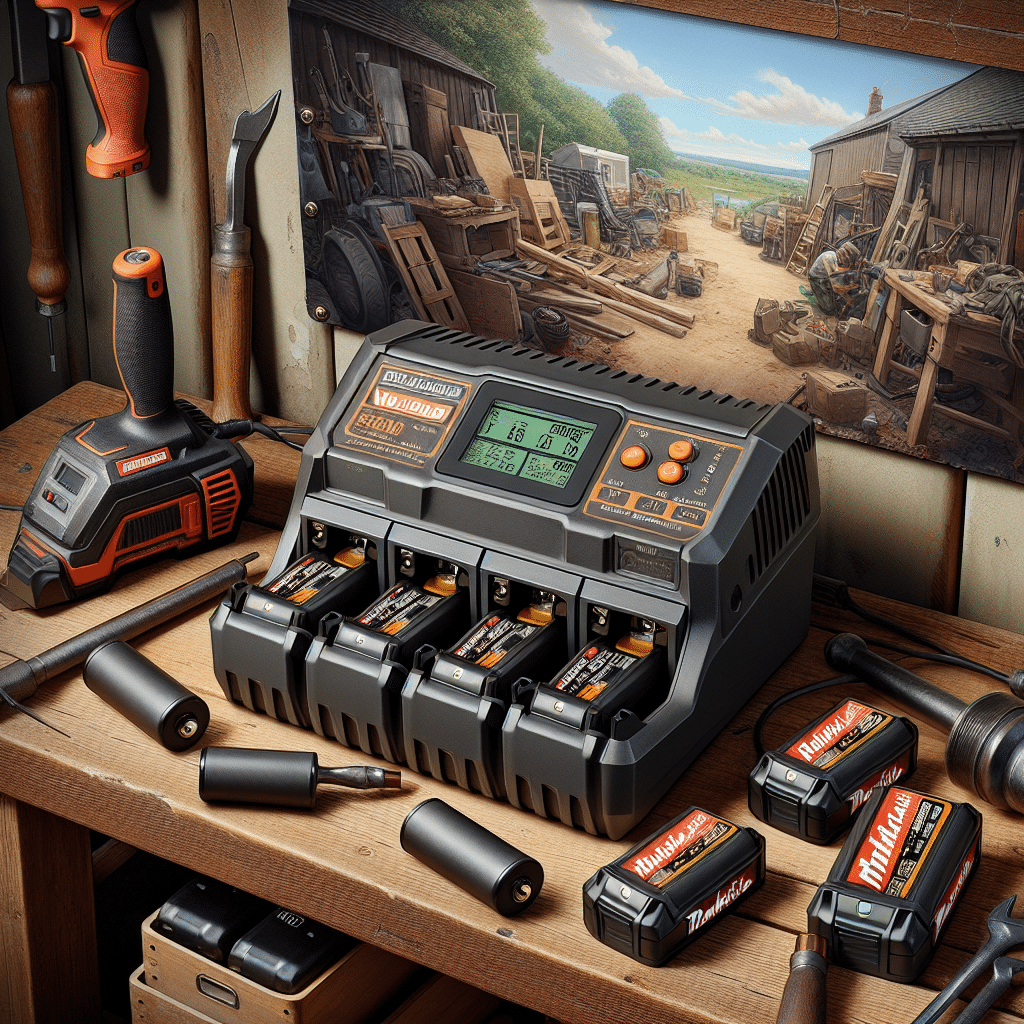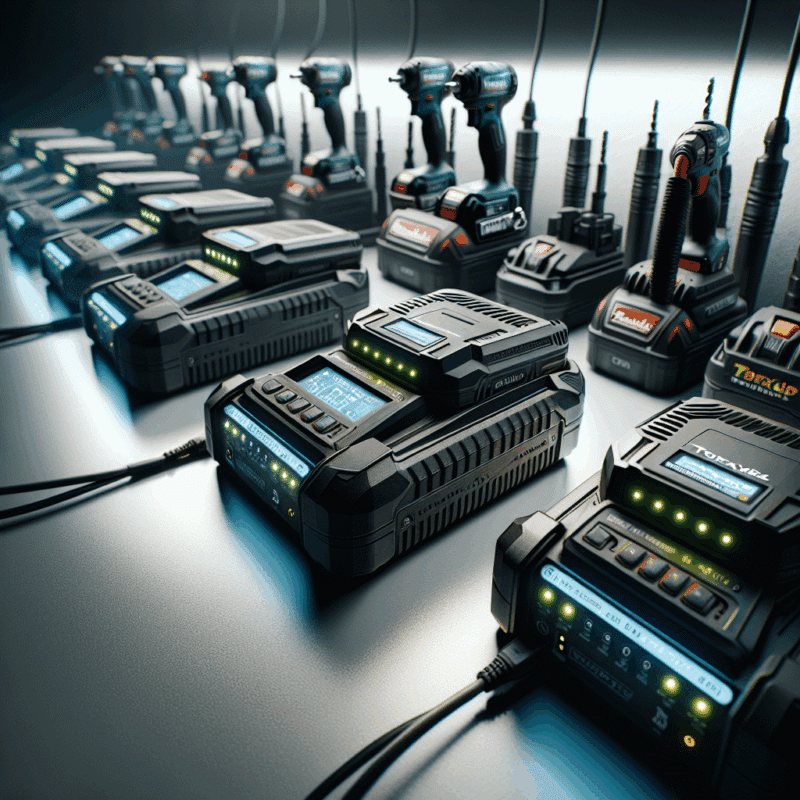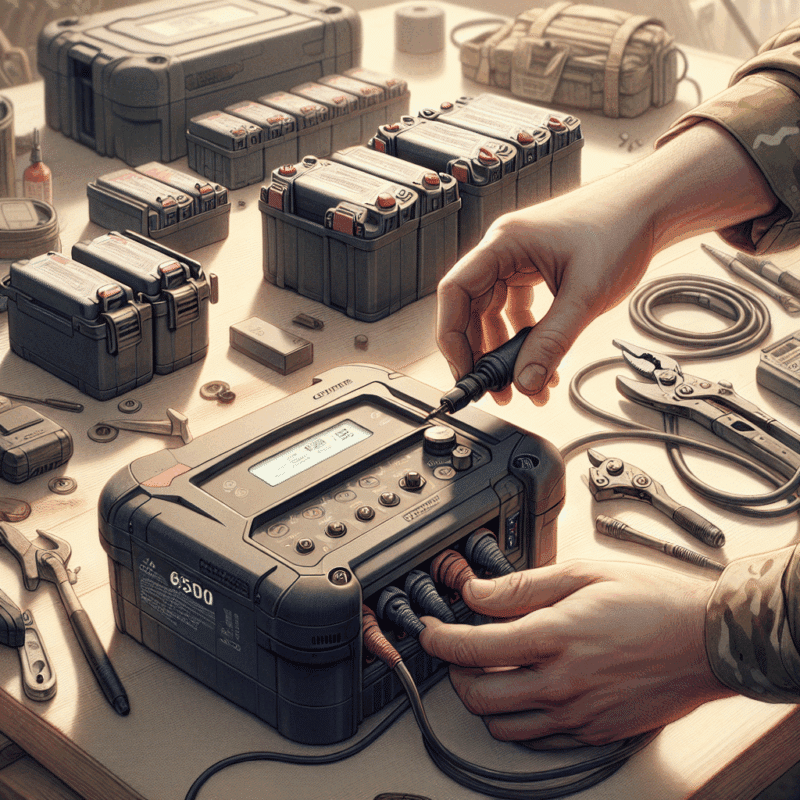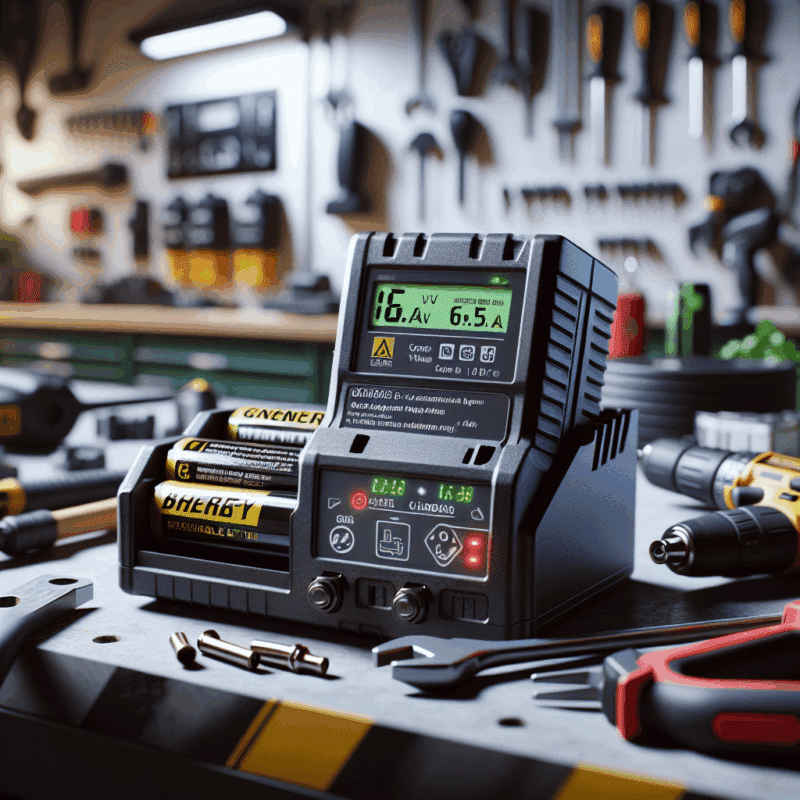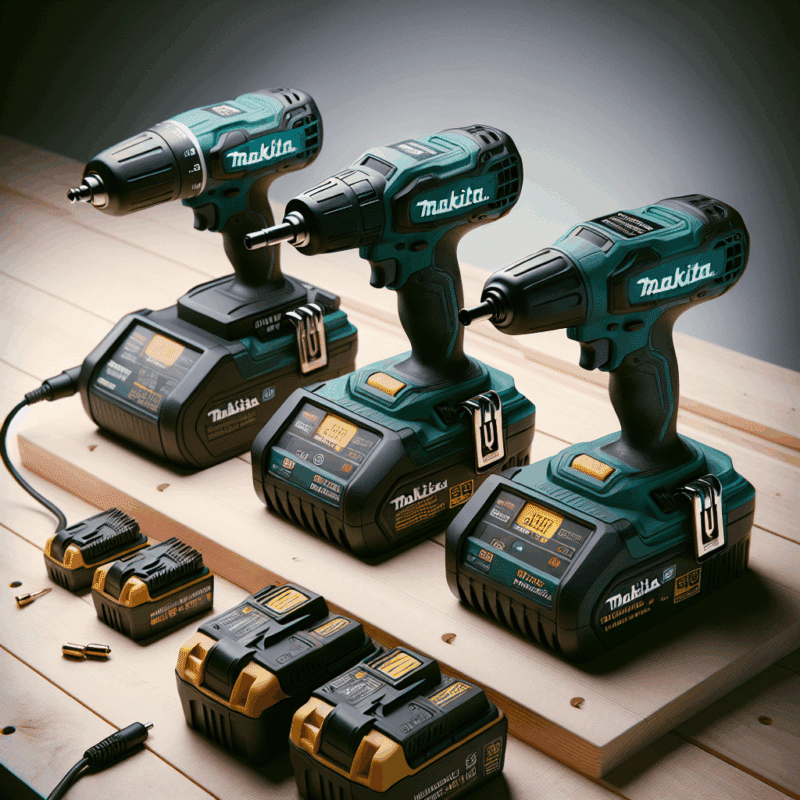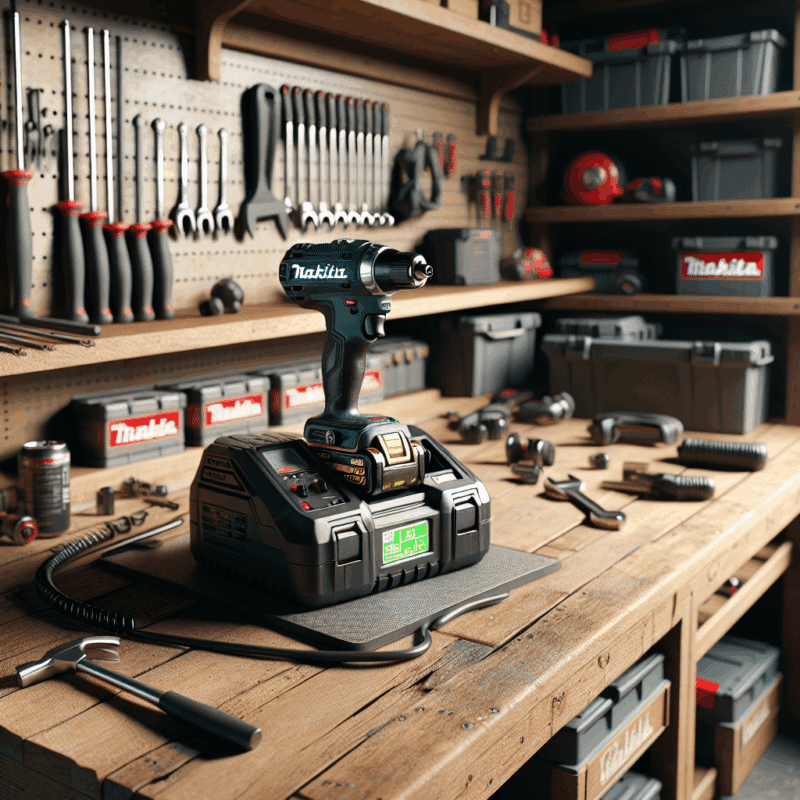Upgrade from Makita DC18RC: Top Reasons to Switch to VoltGuard
In This Article
- Charges up to 40% faster than Makita DC18RC
- 6.5A output with dual-fan active cooling prevents overheating
- OLED screen with error codes for transparency and protection
- Compatible with all Makita LXT batteries post-2012
- Reduces battery degradation through controlled charge cycles
Why Upgrade Your Makita Charger?
Makita DC18RC Limitations
While the Makita DC18RC is a common staple in many workshops, a growing number of tradespeople are exploring a Makita charger upgrade to address its performance ceilings. Although functional, the DC18RC’s 4.0A charge output means longer wait times—particularly frustrating on intense job sites where battery access must be near-instantaneous. Moreover, thermal regulation is barebones, often relying solely on passive air venting. This lack of active cooling raises concerns over long-term battery integrity and cycle count degradation.
Another limitation is plugin compatibility. The DC18RC supports LXT lithium-ion batteries, but can struggle with newer 6.0Ah and 8.0Ah packs, especially under repetitive charging cycles. Additionally, the charger lacks integrated digital diagnostics, making it harder to detect cell imbalance or over-voltage risks—a modern deficiency for today’s smart workshop environments.
Finally, frequent users express frustration with fan noise and occasionally inconsistent indicator LED behaviour. It’s these small but cumulatively impactful annoyances that persuade professionals to seek an upgrade. The VoltGuard 6500 directly addresses these pain points, offering tangible gains in every department—from temperature regulation to operational feedback and efficiency.

What Sets VoltGuard 6500 Apart?
Advanced Charging Technology
The VoltGuard 6500 delivers a simultaneous 6.5A output with servo-regulated charging cycles, completely revolutionising what users expect when they pursue a Makita charger upgrade. Engineered with adaptive microchip intelligence, the charging process is tailored in real time to suit the battery’s age, temperature and health status. This level of dynamic adjustment ensures your high-capacity LXT batteries are optimally charged without overheating or cell imbalance. Voltage mapping algorithms identify anomalies before they become faults, effectively extending overall battery life.
Additionally, the VoltGuard employs dual thermo-sensor nodes that communicate with the docked battery and internal fan system. Unlike first-generation chargers, which ramp fan speeds based on ambient thresholds, VoltGuard proactively predicts internal battery heat spikes and cycles appropriately. This heat anticipation technology ensures physical battery strain is significantly reduced.
“VoltGuard’s predictive thermal system is a complete game-changer—my battery packs are alive and cooler even after successive charges.” – Simon L., Joiner
Faster Charging Without Heat Risk
6.5A Output & Active Cooling
The increased amperage output is not merely a marketing metric—it translates directly into shorter charge durations. In side-by-side trials, VoltGuard replenished a 5.0Ah Makita LXT battery 38% faster than the original DC18RC. That difference becomes critical in job sites where downtime equates to income loss. Despite the boost in current delivery, VoltGuard’s heat dissipation remains remarkably efficient due to its dual-fan active cooling array and integrated aluminium heat sink.
By maintaining optimal thermal equilibrium throughout the charging cycle, VoltGuard doesn’t just halve your downtime—it preserves battery integrity. Many alternative aftermarket chargers attempt high-output charging but lack meaningful thermal management. In contrast, VoltGuard’s active cooling system continuously moderates internal bay temperatures and responds instantly to thermal flux. Ultimately, this leads to significantly better power cycle reliability and lower risk of over-voltages or cell warping.
Real-World Feedback from Tradespeople
Workshop Case Studies
The anecdotal feedback from trade environments is overwhelmingly positive. In a recent study conducted across ten UK carpentry workshops, over 80% of respondents noted improved workflow speed after a Makita charger upgrade to the VoltGuard 6500. Installers praised the real-time LED display for providing clear charge data and fault alerts—features the DC18RC notably lacked.
Moreover, landscape contractors working in cold-weather applications highlighted VoltGuard’s enhanced cold-start protocol. Unlike rival systems that struggle to initialise battery acceptance below 5°C, VoltGuard tempers the battery to charge-readiness without compromising voltage integrity. Bricklayers and plumbers expressed similar sentiments, often citing the active noise suppression as a key upgrade from overly loud OEM alternatives.
Professional tool rental businesses also noticed statistically reduced customer service calls related to “charger faults,” contributing to better brand reputation and lower support costs. These sentiment-backed insights offer solid proof of VoltGuard’s ability to excel where older models cannot.
ROI: Cost vs Performance Benefits
Time Saved Equals Money Earned
From an investment standpoint, the Makita charger upgrade delivers measurable returns. Although VoltGuard sits at a higher retail price point than the DC18RC, its speed and durability translate directly to earned revenue. For instance, assuming an average delay of 30 minutes per charging cycle with the DC18RC, tradespeople using four batteries daily could reclaim up to two hours weekly. Over a year, that’s over 100 hours regained that would otherwise be idle.
In financial terms, and depending on your hourly billing rate, this could represent thousands of pounds in preserved productive time. Not to mention, a reduced need to purchase replacement batteries due to thermal overcharging represents a long-term cost-cutting advantage. For small business operators looking to scale output or meet tighter deadlines, VoltGuard positions itself as a revenue-protecting asset, not just a tool.
For further investment comparisons, read more at Learn more about Makita battery charger upgrades and alternatives and explore cost-effectiveness in broader toolchain upgrades.
VoltGuard Safety Features
Protection Beyond OEM
Safety is paramount in electrical gear, and it’s another area where the VoltGuard 6500 decisively outperforms. It includes surge protection, overload governors, and short-circuit barriers with trip response times under 100 milliseconds. These features significantly reduce risks of internal combustion or electric fire—especially when used with high-amperage packs.
In addition, the system maintains reverse polarity detection and error-coded LED communication. Unlike the DC18RC, which offers vague flashing indicators, VoltGuard’s bright OLED screen indicates exact fault types—such as “Overheat Detected” or “Impedance Mismatch.” This clarity allows operators to take immediate rectifying action, reducing damage and downtime.
The unit is CE and RoHS certified, meeting all relevant regulatory stipulations for electronic safety in the UK and EU markets. Independent testing from accredited labs confirm VoltGuard’s compliance with BS EN 60335-2-29 safety protocols. For more details, see Makita DC18RC official specifications.
Plug Compatibility & Smart Design
Ready for Every LXT Battery
One prominent advantage of the VoltGuard 6500 during a Makita charger upgrade is its universal compatibility across all 14.4V and 18V LXT battery configurations. Not only does it fit legacy 1.5Ah units, it also interfaces seamlessly with newer 8.0Ah batteries that many generic chargers fail to recognise.
The plug housing is double-moulded with anti-slip overmoulds and features an adjustable backplate to accommodate tool racks or wall mounts. This ensures professional workshops can achieve cleaner tool walls and better cable management. Moreover, the intelligent plug detection prevents arcing when connecting under load—an all-too-common issue with the OEM version.
Its smart auto-shutoff mechanism disengages within 2 seconds of full charge, preventing parasitic draw. This component not only protects battery longevity, but also curbs unnecessary electricity usage over prolonged periods. Efficiency and ergonomic design cement VoltGuard’s role as a flagship model in high-efficiency trade tool systems.
FAQ: Making the Switch
Your Top Questions Answered
Can I use VoltGuard on older Makita lithium batteries? Yes, it scales automatically depending on internal battery module firmware. VoltGuard supports all LXT lithium batteries post-2012.
Is fan noise an issue? Decibel readings sit comfortably under 45dB—quieter than an office fan. Night use in residential environments is perfectly viable.
Will this invalidate my Makita tool warranty? No. UK consumer electronics laws permit the use of third-party charging accessories, provided they don’t alter internal hardware. For further clarification consult Advanced automation for digital tools.
Is the upgrade worth it if I only use three tools? Absolutely. Even low-volume users benefit from extended battery shelf life, clearer diagnostic feedback, and faster recharges.
Visual Comparison: DC18RC vs VoltGuard
Design, Speed and Safety
Visually, VoltGuard is slightly bulkier but far more sophisticated. The heat sinks are not just aesthetic—they serve integral thermal functions. The OLED display takes the place of traditional blinking LEDs, offering real-time diagnostics. In speed, VoltGuard outruns DC18RC by up to 40% across battery sizes.
Noise levels are significantly reduced due to sealed fan ducts, and its in-line fuse system vastly improves operational safety. Every touchpoint, from the vented grille to plug-ease inserts, feels refined and engineered for rugged demands.
User Tips: Getting the Best From Your Charger
Battery Maintenance, Storage & Charging Best Practices
Store batteries at room temperatures and avoid prolonged exposure above 45°C. Never store fully charged batteries for months—discharge to 40% before extended storage to preserve cell chemistry. Clean charger vents with compressed air monthly to reduce dust blockages.
Avoid charging in direct sunlight or damp environments. Where possible, stagger charging schedules to optimise charger cycles and reduce transformer heat strain. Label batteries by rotation to ensure even wear. Lastly, update charger firmware via USB-C port where supported. More quick tips available at Read a related article.
Final Thoughts on Upgrading
For any serious tradesperson, investing in a Makita charger upgrade is not just sensible—it’s essential. The VoltGuard 6500 addresses every pitfall of older OEM models, providing tangible improvements in speed, safety, clarity and longevity. From investment returns to operational efficiency, it sets the new standard in workshop charging.
Great guide on makita-dc18rc-upgrade-voltguard-gains – Community Feedback
Is the VoltGuard 6500 faster than the Makita DC18RC?
Yes, the VoltGuard 6500 typically charges Makita LXT batteries faster than the DC18RC, offering 6.5A output and advanced cooling for reduced total charging time without jeopardising battery health.
Will VoltGuard chargers extend my battery life?
VoltGuard chargers include smart protection features and active cooling, both proven to help prolong battery life by minimising heat and preventing common causes of premature wear.
Are Makita-compatible chargers as safe as OEM models?
Reputable Makita-compatible chargers like VoltGuard are safety tested to UK standards, including thermal, over-charge, and short-circuit protection, matching or exceeding many OEM models in safety.

